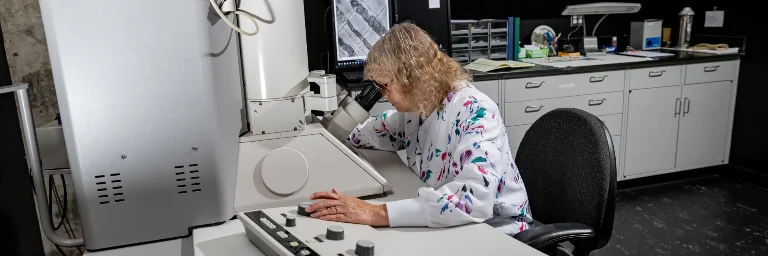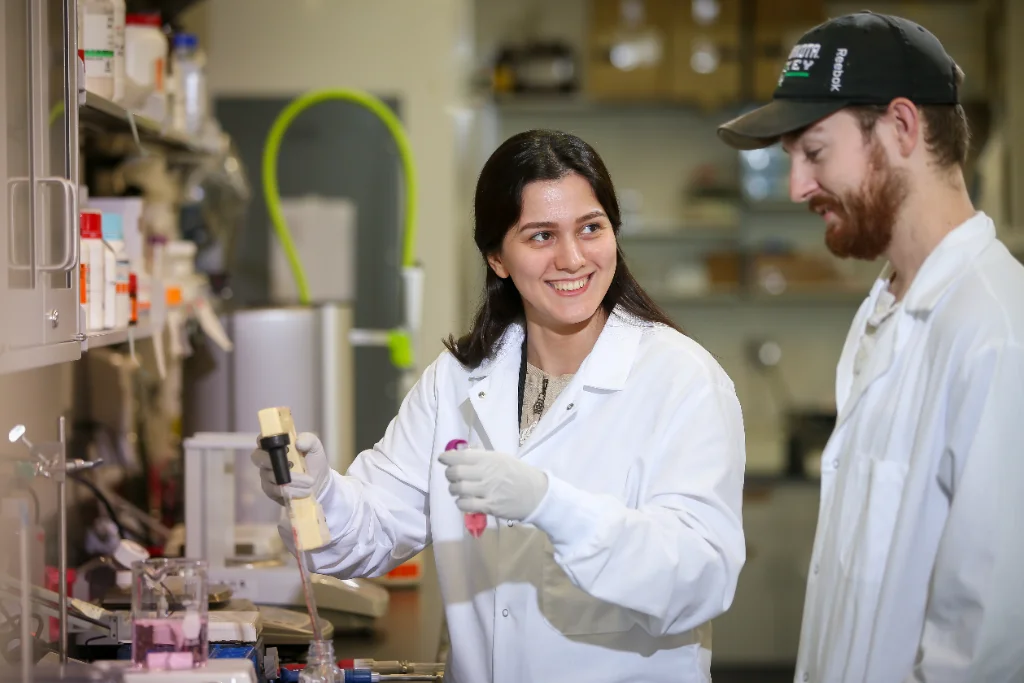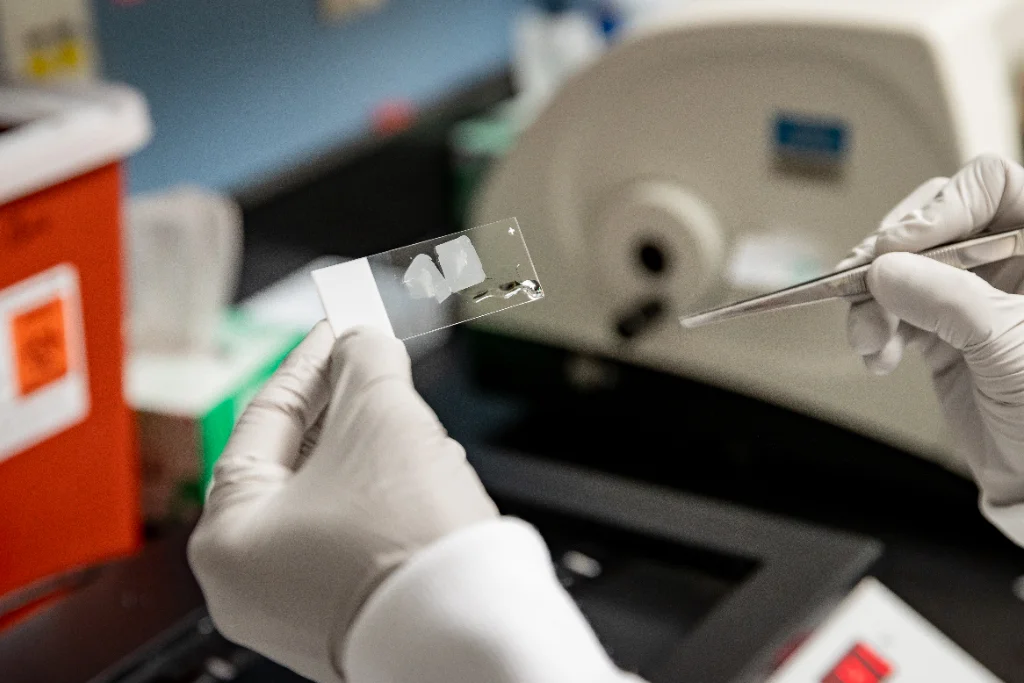
Navigating Biomedical Engineering Careers: A 2026 Guide
Discover a range of biomedical engineering career paths, spanning from research and development to regulatory affairs.
Request Information
Professionals in these fields help innovate medical devices, manage healthcare equipment, design prosthetics, enhance imaging technologies and engage in various other impactful endeavors shaping the future of healthcare.
Biomedical engineering careers present a unique opportunity to merge engineering principles with medical sciences. This integration is crucial for advancing healthcare, as it involves applying engineering techniques to solve medical challenges. The field is especially suited for those who aim to use their technical expertise to enhance patient care and health outcomes.
In this discipline, professionals engage in a wide range of activities, from the design of advanced medical equipment to the development of innovative therapies. Whether one's interest lies in research, the development of medical devices or clinical applications, careers in biomedical engineering are intellectually stimulating and fulfilling.
If you’re keen on exploring this dynamic field, continue reading to uncover the diverse and impactful opportunities that biomedical engineering careers offer.
What is a Biomedical Engineer?
A biomedical engineer is a professional who utilizes engineering principles to tackle health and healthcare-related issues. Combining engineering, biology and healthcare, these engineers focus on designing medical equipment and processes to enhance health outcomes.
Biomedical engineers engage in various tasks, such as designing medical devices like pacemakers and artificial limbs, installing and repairing medical equipment, conducting research on existing biomedical devices and biological processes as well as training medical professionals on using new medical equipment. Their role contributes significantly to advancing medical technology and improving patient care.
Biomedical Engineering Career Paths
Biomedical engineering offers various career paths that cater to different interests and skill sets. Below, we will explore some of them as each presents unique opportunities and challenges.
Research and Development
Within this career path, biomedical engineers engage in medical device design, pharmaceutical research and healthcare technology innovation. They collaborate with multidisciplinary teams to conceptualize, prototype and refine cutting-edge medical devices, ranging from implantable sensors to diagnostic tools. Additionally, they contribute to pharmaceutical research by developing drug delivery systems and optimizing production processes.
Innovation in healthcare technology, such as telemedicine platforms and wearable health monitors, also falls under the purview of research and development biomedical engineers.
Clinical Engineering
Clinical engineering is the crucial link between cutting-edge medical technology and hands-on patient care in healthcare settings. This field focuses on ensuring that all medical equipment, from life-saving machines to diagnostic tools, operates reliably and safely.
Professionals in clinical engineering handle everything from selecting and installing new devices to maintaining and calibrating existing ones, always with patient safety and regulatory compliance in mind. Their work is vital, often happening behind the scenes, to keep healthcare services running smoothly and efficiently, making them the unsung heroes in the pursuit of better patient care.
Biomechanics
Biomechanics is a specialized field within biomedical engineering that revolves around studying the mechanical aspects of living organisms, particularly human movement and musculoskeletal systems. Biomedical engineers specializing in this area contribute to designing and developing prosthetic devices, orthopedic implants and assistive technologies to restore mobility and enhance the quality of life for individuals with disabilities.

Professionals in biomechanics employ computational modeling, motion analysis and biomaterials science to optimize the performance and functionality of biomechanical systems. Additionally, biomechanics experts conduct research to understand injury mechanisms, improve sports equipment design and enhance rehabilitation techniques.
Biomedical Imaging
Biomedical imaging is centered around the development and maintenance of medical imaging technologies used for diagnostic and therapeutic purposes. Professionals in this field work on a wide range of imaging modalities, including X-ray, MRI, CT, ultrasound and nuclear medicine. They contribute to designing and optimizing imaging systems, developing image processing algorithms for enhanced diagnostic accuracy as well as ensuring regulatory compliance and safety standards.
Regulatory Affairs
Engineers in regulatory affairs help ensure the safety, efficacy and compliance of biomedical products and technologies. They work closely with regulatory agencies, such as the FDA (Food and Drug Administration) and EMA (European Medicines Agency), to prepare and submit regulatory submissions, including premarket notifications, investigational device exemptions and marketing applications.
Additionally, regulatory affairs professionals conduct risk assessments, develop quality management systems and oversee post-market surveillance activities to monitor product performance and address potential safety concerns. Their expertise is essential for navigating the evolving regulatory landscape and bringing innovative biomedical products to market while mitigating regulatory risks.
Emerging Trends and Technologies
In the dynamic arena of biomedical engineering, the synergy between artificial intelligence (AI) and healthcare is unlocking revolutionary prospects. AI's prowess in deciphering complex patient data is not just refining diagnostics but is also steering the course toward highly personalized medical treatments.
This leap toward customization in healthcare is paralleled by groundbreaking strides in biomaterials and tissue engineering. Here, the fusion of science and innovation is birthing more harmonious implants and pioneering the potential for laboratory-grown organs through 3D bioprinting. Together, these advances are weaving a future where healthcare is not only more precise but deeply attuned to the individual's unique health blueprint.
Educational Requirements and Skills
Becoming a successful biomedical engineer requires a combination of rigorous education and specific skill sets. The typical educational pathway begins with obtaining a bachelor's degree in Biomedical Engineering or another related field, such as biology or mechanical engineering. The coursework often covers foundational topics, including biology, physiology, mathematics and engineering principles.
After completing a bachelor's degree, many aspiring biomedical engineers pursue advanced education through a master's in Biomedical Engineering or a Ph.D. Such degrees provide opportunities for specialization and advanced coursework in areas like biomedical imaging, biomechanics or tissue engineering. Doctoral programs, in particular, are often necessary for research-oriented or academic positions within the field.
This formal education equips aspiring biomedical engineers with a well-rounded skill set, ensuring that they acquire both the technical proficiency and non-technical abilities crucial for navigating the complexities of the healthcare field and driving innovation in medical science and technology.
Through structured coursework, laboratory experiences and research projects, students develop technical expertise in biology, physiology, mathematics and engineering principles. Additionally, they cultivate soft skills, including communication, teamwork, critical thinking and adaptability, preparing them to thrive in diverse professional environments and contribute meaningfully to advancements in biomedical engineering.
Career Advancement and Specializations
Biomedical engineers have numerous opportunities for career advancement and specialization within the field, allowing them to tailor their expertise to specific areas of interest and professional goals.
One common avenue for career advancement in this field involves gaining practical experience and taking on more challenging roles. Biomedical engineers may begin their careers in entry-level positions working as research assistants or design engineers and then move on to positions with greater responsibility, such as project managers or team leaders. Possessing leadership skills, technical proficiency and the ability to innovate can open doors to higher-level positions within industry, academia or healthcare institutions.

Further education and training are another pathway for career advancement in biomedical engineering. Many professionals pursue graduate degrees and professional certifications to deepen their knowledge in specialized areas of the field. Certifications like the Certified Biomedical Equipment Technician (CBET) and the Biomedical Imaging Equipment Technician (BIET) demonstrate competency in specific practice areas and can enhance credibility in the job market.
Challenges and Rewards of a Biomedical Engineering Career
Biomedical engineering presents a set of challenges alongside rewarding opportunities. On the one hand, the complexity of merging engineering principles with biological systems requires interdisciplinary knowledge and collaboration across diverse fields, which is quite challenging. Engineers must navigate intricate regulatory frameworks and stringent quality standards to ensure the safety and efficacy of medical devices and technologies, which can pose logistical and regulatory hurdles.
Moreover, the rapid pace of technological advancement in biomedical engineering demands continuous learning and adaptation to stay abreast of emerging trends and innovations. Engineers often face resource constraints and budget limitations, particularly in research and development settings, which can impede progress and innovation.
However, on the other hand, engineers have the satisfaction of knowing their work directly contributes to improving patient care, enhancing quality of life and saving lives. Moreover, they are rewarded with lucrative salaries as their median annual wage stands at an impressive $108,060, reflecting the value placed on their specialized expertise and contributions to healthcare innovation.
The Bottom Line
Whether designing life-saving medical devices, optimizing imaging technologies or ensuring regulatory compliance, biomedical engineers are instrumental in addressing the challenges of modern healthcare. So, as you reflect on the opportunities within this field, consider the profound impact that you could have by pursuing a biomedical engineering career.
Be at the forefront of innovation with our bachelor's, master's and Ph.D. degrees. Your journey to driving positive change and contributing to healthcare advancements starts here.
FAQs
Some potential cons of being a biomedical engineer include the high level of competition in the field, especially for research-oriented positions and the necessity for ongoing education to keep up with rapidly evolving technologies and methodologies.
Biomedical engineering programs typically span four years for a bachelor's degree. Advanced degrees, such as master's or doctoral programs, may add an additional two to six years, depending on the level of specialization and research requirements.
Engineers in petroleum, computer and aerospace engineering have some of the highest earning potentials. However, biomedical engineers also enjoy competitive salaries.
Biomedical engineering is an excellent career choice, providing opportunities for meaningful contributions to healthcare advancements. However, it's essential to consider factors such as personal interests, career goals and job market conditions when evaluating whether biomedical engineering is the right fit for you.
As a biomedical engineer, you would design and develop medical systems and equipment to improve healthcare outcomes. This could involve conducting research to innovate new technologies, collaborating with healthcare professionals to understand clinical needs, designing and testing prototypes as well as ensuring compliance with regulatory standards.